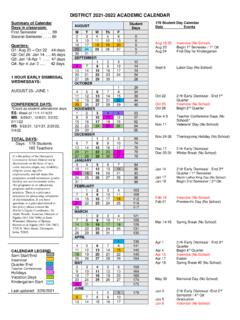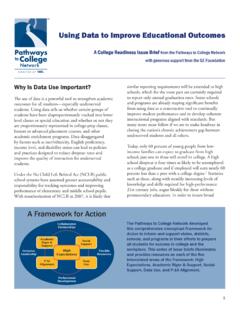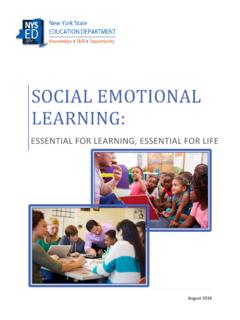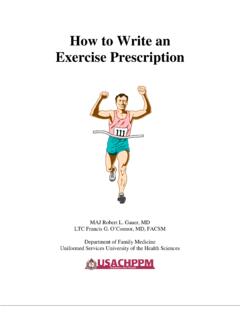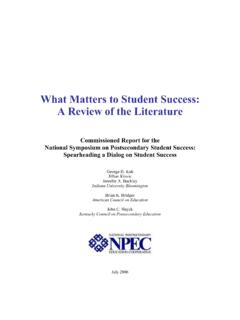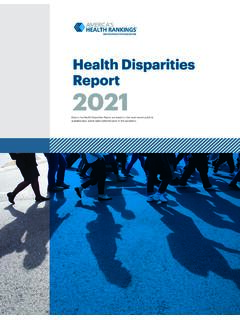Transcription of Status Report 2019 - Clemson University
1 2019 by Hazelden Betty Ford Foundation. All rights reserved. Bullying in Schools 2019 Status REPORTA ssessed using data collected from the Olweus Bullying Questionnaire Harlan Luxenberg, MA, Professional Data AnalystsSusan P. Limber, PhD, Clemson UniversityDan Olweus, PhD, Department of Health Promotion and Development, University of Bergen, NorwayPublished by Hazelden Publishing, 2019 2019 by Hazelden Betty Ford Foundation. All rights reserved. Duplicating this material for personal or group use is permissible. 1 BULLYING IN SCHOOLS: 2019 Status REPORTThis Report updates the 2013 Status Report (Luxenberg, Limber, and Olweus 2014) and reflects the Status of bullying around the United States during the 2015 2019 school years (August 1, 2014, through June 30, 2019).
2 The researchers and organizations who created the previous Report updated this Report , including Harlan Luxenberg and Sara Richter at Professional Data Analysts; Susan P. Limber, PhD, at Clemson University ; Dan Olweus, PhD, at Uni Health, University of Bergen, Norway; and the Hazelden Betty Ford Foundation. Using data collected from the Olweus Bullying Questionnaire (OBQ), a representative sample was created based on more than 245,000 questionnaires administered to students at schools that intended to, but had not yet implemented the Olweus Bullying Prevention Program, an internationally respected anti-bullying same questionnaire items were asked of all students in grades three through twelve across the United States. This consistency of questions across grades and regions provides a rare opportunity to view a snapshot of bullying behavior in our nation s schools, based on the reports of children and youth themselves.
3 A representative sample was used from this data set to explore the following bullying topics: What percentage of students are bullied and/or bully others? What are the ways in which students are most often bullied? In how many ways are most students bullied? How long does bullying last? Where are students bullied? How is bullying related to liking school ? Whom do students tell about being bullied? How do students respond to bullying? Are students afraid of being bullied? How do students and adults respond to bullying?We hope that this Report helps teachers, administrators, parents, policymakers, and concerned citizens raise national awareness about bullying and improve school environments so every child can feel safe at in Schools: Report PurposeWe hope that this Report helps teachers, administrators, parents, policymakers, and concerned citizens raise national awareness about bullying and improve school environments so every child can feel safe at IN SCHOOLS: 2019 Status Report 2019 by Hazelden Betty Ford Foundation.
4 All rights reserved. Duplicating this material for personal or group use is permissible. 2 Despite a dramatic increase in public awareness and anti-bullying legislation nationwide, the prevalence of bullying is still one of the most pressing issues facing our nation s youth. Bullying affects individuals across ethnicity, gender, grade, and socioeconomic Status , whether they live in urban, suburban, or rural communities. Bullying can have serious effects during the school years and into adulthood. One of the best tools that schools have for decreasing the problems associated with bullying behavior is to implement evidence-based prevention of the most widely researched and highly regarded of these programs is the Olweus Bullying Prevention Program (OBPP), developed by Dan Olweus, PhD.
5 This unique program uses a comprehensive schoolwide, systems-change approach that involves teachers, students, parents, and other school and community personnel in an effort to reduce existing bullying problems and prevent future problems from occurring. The program has been used in more than a dozen countries by millions of students worldwide, receiving high accolades in the United States and The Olweus Bullying QuestionnaireAs part of OBPP, school staff administer the Olweus Bullying Questionnaire, or OBQ (Olweus 1996, 2007), typically at the same time each year, to monitor and measure changes in bullying and antisocial behavior in their schools. This is an anonymous forty-item questionnaire that students in third through twelfth grades fill out about their experiences and observations related to bullying.
6 The questionnaire has two main parts that measure a student s involvement in nine forms of bullying (as one who has experienced bullying and also as one who has bullied others). The questionnaire also includes questions about students reactions to bullying incidents that they have observed, self-reports regarding school climate, and observations of others reactions to bullying. The questionnaires can be administered online by using a computer or tablet, by employing an interactive whiteboard in the classroom, or by filling out a paper OBQ has undergone rigorous psychometric testing through the years to ensure the data collected from it can be used to accurately understand a school s or district s prevalence of bullying and to assess the effectiveness of OBPP.
7 Multiple studies have demonstrated strong consistency among subgroups of questionnaire items, with alpha reliability coefficients in the to range ( , Pellegrini 2001; Solberg and Olweus 2003; see Olweus 2013; Olweus and Limber 2019 for an overview) as well as evidence of construct validity (Kyriakides, Kaloyirou, and Lindsay 2006; Solberg and Olweus 2003; Breivik and Olweus 2015) and criterion-related validity (Olweus 2010, 2012; Pellegrini 2001). Collectively, these measures provide evidence that the results of the questionnaire accurately illustrate the prevalence of bullying in schools (Olweus and Limber 2019)._____1. OBPP is listed as a Promising Program by Blueprints for Healthy Youth Development, and a large, systematic review of anti-bullying programs worldwide concluded that programs inspired by the work of Dan Olweus worked best (Ttofi and Farrington 2011, 41 42).
8 Bullying in Schools: Report BackgroundBULLYING IN SCHOOLS: 2019 Status Report 2019 by Hazelden Betty Ford Foundation. All rights reserved. Duplicating this material for personal or group use is permissible. 3 Before students are asked about their bullying experiences, they are provided with a definition of what does and does not constitute bullying. According to OBPP, an individual is being bullied when he or she is the target of aggressive behavior by another student or students (for example, when others say mean things, deliberately and systematically ignore someone, physically hurt others, spread negative rumors, or do other hurtful things), and when a power imbalance exists between the individuals involved. Typically, bullying behavior happens more than once.
9 After reading a clear definition of bullying, students are asked in the OBQ s question 4, How often have you been bullied at school in the past couple of months? and later in question 24, How often have you taken part in bullying another student(s) at school in the past couple of months? Depending on their answers to these corresponding questions, students are classified into four groups. If students answer 2 or 3 times a month, About once a week, or Several times a week to question 4, they are considered to be bullied for the purposes of the analyses. If they select these same responses to question 24, they are defined as someone who bullies others. If they select these responses to both questions, they are considered to bully others and also to be bullied (also known as bully-victims ).
10 If none of these responses are selected for either question, they are considered neither to have been bullied nor to have bullied others and consequently not involved in bullying (see figure 1). Dividing students into these groups is helpful because students often share common characteristics within these groups ( , Jimerson, Swearer, and Espelage 2010). For example, students who are bullied are more likely than their nonbullied peers to have low self-esteem, loneliness, anxiety, and depression (Cook et al. 2010; Klomek et al. 2007; Olweus 1993) and experience later depression, anxiety, and psychosomatic problems (Lereya et al. 2015; National Academies of Sciences, Engineering, and Medicine [National Academies] 2016; Reijntjes et al. 2010; Ttofi et al. 2011a).
